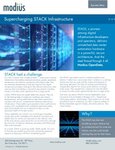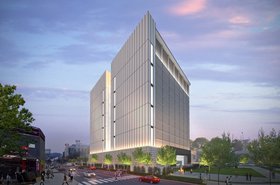Many data center providers are now using being “green”, as a competitive advantage, knowing that businesses in all industries increasingly demand sustainable partners. However, with pervasive accusations of green washing in the industry, society’s ever growing digital dependency and the amount of data we use rising exponentially, there are still a number of issues to navigated if true sustainability is to be achieved.
Many experts agree that the most important thing data centers can do is to look at the technology being used and work out how it can be run more efficiently. There is also a growing commitment to “get more life” from data center equipment; when an asset requires replacing, environmentally committed providers will assess whether refurbished parts can be used to renew and repair rather than buying new.
However, it’s a hard truth that the data center industry isn’t going to achieve true sustainability simply by relying on developments in technology and tweaking what is being done now. Indeed, most data centers have been operating best practice for some time, such as developing a robust approach to air management and implementing effective cooling techniques. These isolated changes will make some difference, but not enough.
The industry must take a more holistic approach and consider sustainability at every point of the data center lifecycle – from design, to build, to operation and maintenance. Indeed, reducing a facility’s carbon emissions starts with design and construction. Data centers use enormous amounts of concrete and steel, which are major sources of CO2, and as the sustainability gains from operational efficiencies dry up, providers will have to look to embodied carbon in the construction phase if they are serious about being climate neutral. As an industry, we must commit to using low carbon materials, to streamline the delivery process and minimise consumption of new resources.
We also think that there’s room to look outside of traditional comfort zones when it comes to reducing emissions. Currently, many data center operators are focused firmly on tackling Scope 1 carbon emissions, generated directly from their own operations, as well as Scope 2 emissions, which come from the production of electricity purchased and used. However, whilst this represents progress, greater efficiencies can be realised by targeting Scope 3 emissions – or “value chain emissions” - generated from partners and suppliers. So, it’s crucial that, as an industry, we look at all of our supply chain, and demand the same rigorous green credentials from our partners and suppliers as our customers do from us.
Responsibility must also incorporate reliability and resilience
As more companies turn to cloud computing and increase their data storage needs, there has been a growing spotlight on the data center industry and its sustainability credentials. But sustainability won’t help the success of providers unless it comes under the umbrella of the 3Rs: Responsibility, Reliability and Resilience.
A sustainable data center is often also a high performing and efficient facility. Renewable energy sources are fast becoming seen as more reliable than fossil fuels – not least, because renewable energy is not reliant on a single source, but from several – such as wind, solar, hydro and biomass. What’s more, free from the fluctuations of the international oil market, renewable energy is more resilient in cases of falling demand and economic decline. The added challenge of these unprecedented times in the European energy markets means that those providers that bought their renewable energy in bulk on long term energy contracts, at fixed prices, have benefited from some stability and consistent pricing, enabling them to absorb some of the price increase – crucial as we traverse through an uncertain political and economic landscape.
Another great example of performance and sustainability being intrinsically linked is within the cooling of a data center. There has been plenty of innovation happening in this arena, and the good news is that energy efficient methods of cooling – such as harnessing indirect adiabatic and evaporative cooling technology – are both more sustainable and more efficient than many older methods. There have however, also been efficiency improvements with older methods resulting in improved performance without the water consumption of adiabatic systems. This has led to the availability of solutions that are suitable for all climate regions around the globe.
Not an easy road
The journey to sustainability isn’t going to be easy. Data centers enable all the great technology advancements being achieved in the world – cloud computing, internet and application services, social media, remote working, learning and meeting platforms, video and music streaming, shopping, travel, health and medical research. Everything runs from a server in a data center somewhere. Whilst that is exciting, it is also a huge responsibility and challenge for data center providers to keep it safe, secure and available. By ensuring that data center providers are responsible, reliable and resilient, the industry will be able to provide the high level of service and capacity that society demands, as sustainably as possible. Indeed, sustainability efforts aren’t based entirely on corporate altruism or a sense of what’s morally right; they are also important for the bottom line.





